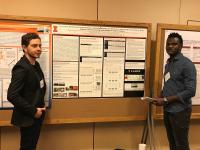Join us for an early evening tour of the Illinois Organic Systems Trial, affiliated projects, and the Organic Nursery.

August 3, 2023 from 4.00-7.00 PM
4202 S First Street Champaign IL
South of the Crop Sciences Research and Education Center at the corner of 1st and Deers Road.
We’d love your input on maximizing the value of our research.
Learn how roots and rotations can contribute to ecosystem services. We will look at the maize roots and corn hybrids, consider how crop rotations influence soils, soil organic matter and soil productivity.
Program
- Intros and Overview at 4.30 & 5.30 pm
- Tour Organic Nursery at 5.00 & 6.00 pm
- Research Reports on Roots, Rotations and Soil Services ongoing
- Food and educational exchange ongoing



